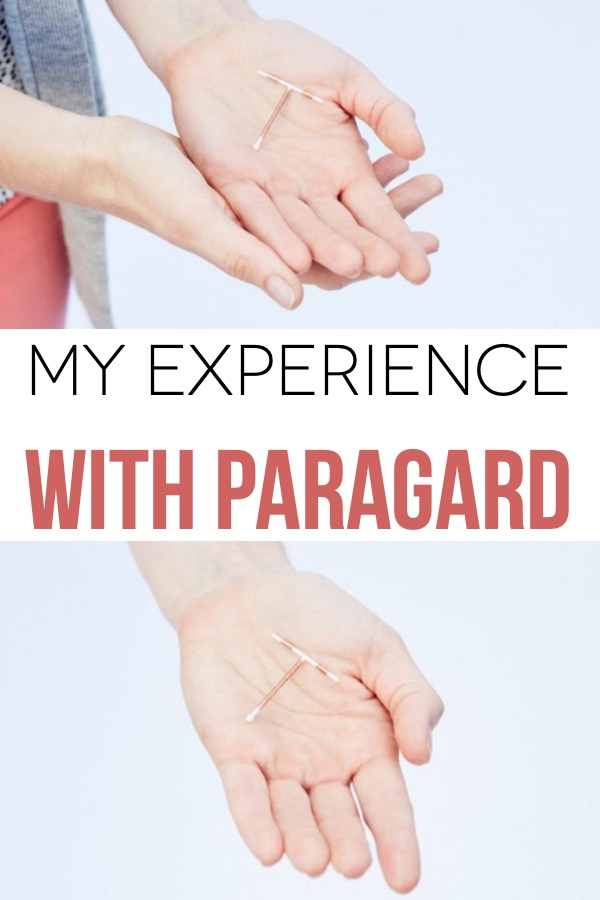My Experience with Paragard
All opinions in the below article are my own. It’s important to talk to your doctor and discuss if Paragard® (intrauterine copper contraceptive) is right for you. I am being compensated for this partner post by SheKnows Media on behalf of CooperSurgical, Inc. Learn more at Paragard.com.
Are you looking for a hormone-free birth control option after having a baby? Birth control options can be a bit overwhelming, especially while you are adjusting to life as a new mom. After my twins were born, I opted for Paragard® (intrauterine copper contraceptive) because I wanted something hormone-free that I could set and forget.

My twins took me by surprise. I wasn’t expecting my little caboose baby to turn into two. After they were born, the tail end of six kids, I knew I was done having kids.
They were the sweetest things ever . . . but my body had been through enough and I was at my limit.

Even knowing that, I chickened out when it came time to get my tubes tied during my C-section. Maybe it was hormones or the finality of the whole thing, but I just couldn’t go through with it.
I still needed VERY secure birth control though, and knowing that I have a rough history with hormonal birth control my options were a bit limited.
Have you considered Paragard?
My doctor recommended Paragard.

Paragard is a small IUD (intrauterine device) that prevents pregnancy for as long as you want up to 10 years. It works differently than other birth control options in that it uses one active ingredient —copper —instead of hormones.
Paragard is the only reversible birth control method that’s 100% hormone-free and over 99% effective. Paragard does not protect against HIV/AIDS or sexually transmitted diseases (STDs).
I had a few key requirements that I wanted in my birth control:
- Hormone-free. I’ve tried hormonal birth control many times in the past and have proven over and over again that I just don’t do well with anything hormonal. That eliminated a good portion of my birth control options.
- Hassle-free. Did I mention I’d just had premature twins? My life was too crazy to have to remember a daily birth control routine.
Before getting Paragard inserted, I did a lot of Googling.
Cause that’s what I do.
After reading up on it (mostly during marathon nursing sessions), I decided that was the way to go.
9 out of 10 women reported they were satisfied with Paragard when surveyed 3 and 6 months after placement+.
I liked those odds.

What about Paragard insertion?

During my research, I came across a ton of information saying that IUD insertion could be rough. Mine was not. This experience is of course different for everyone.
The device itself was smaller than I thought it would be and the actual insertion took just a few minutes.
The important thing I’ve learned about birth control is that everyone’s body is different. You never know how your body will respond until you try something.
Insertion for me was a quick pinch and then a day of light cramping. That’s it. It didn’t derail any of my plans or cause much pain, but again, everyone is different.
My experience with Paragard
I had never had an IUD before I had my Paragard put in, so I wasn’t really sure what to expect. I’d been a bit afraid of them in the past, mostly because I didn’t have all the information.
It surprised me that I can’t feel it inside of me. I could feel my strings when I checked them, as you are instructed to do at least once a month, but the rest of the time I don’t even notice it.
Once the initial cramping went away from insertion, I had no extra pain. I’ve had horrible periods for years, so that didn’t go away, but they were no worse than usual.
I loved having a hormone-free birth control that I didn’t have to think about. I have major mood swings and anxiety when on hormonal birth control and I didn’t experience any of that with Paragard. With newborn twins who weren’t sleeping much, I was very grateful to not have the added mood swings or anxiety from my birth control.
It was a great option for me as a new mom and it let me stop thinking about my birth control and get back to enjoying my twins.
To learn more about Paragard, visit Paragard.com
+ Data are from the Contraceptive CHOICE Project. The study evaluated 3- and 6-month self-reported bleeding and cramping patterns in 5011 long-acting reversible contraceptive (LARC) users (n=826, Paragard), and the association of these symptoms with method satisfaction. Study participants rated satisfaction with their LARC method as “very satisfied,” “somewhat satisfied,” or “not satisfied.” For the data analyses, “satisfied” and “very satisfied” were grouped together as “satisfied.”

INDICATION
Paragard is a small IUD (intrauterine device) that prevents pregnancy for as long as you want up to 10 years. It works differently using one simple active ingredient —copper—instead of hormones.
IMPORTANT SAFETY INFORMATION
-
- Don’t use Paragard if you have a pelvic infection or certain cancers. Less than 1% of users get a serious infection called pelvic inflammatory disease (PID).
- If you miss a period, have persistent abdominal pain or if Paragard comes out, tell your healthcare provider (HCP). If it comes out, use back-up birth control.
- In rare cases, Paragard may attach to or go through the uterus and cause other problems. Pregnancy with Paragard is uncommon but can be life-threatening and may cause infertility or loss of pregnancy.
- Bleeding and spotting may increase in the first 2-3 months but usually decreases over time.
- Paragard does not protect against HIV or STDs.
- Only you and your HCP can decide if Paragard is right for you. Available by prescription only.
You are encouraged to report negative side effects of prescription drugs to the FDA at www.fda.gov/medwatch or call 1-800-FDA-1088.
For full product information, please see the full Prescribing Information






